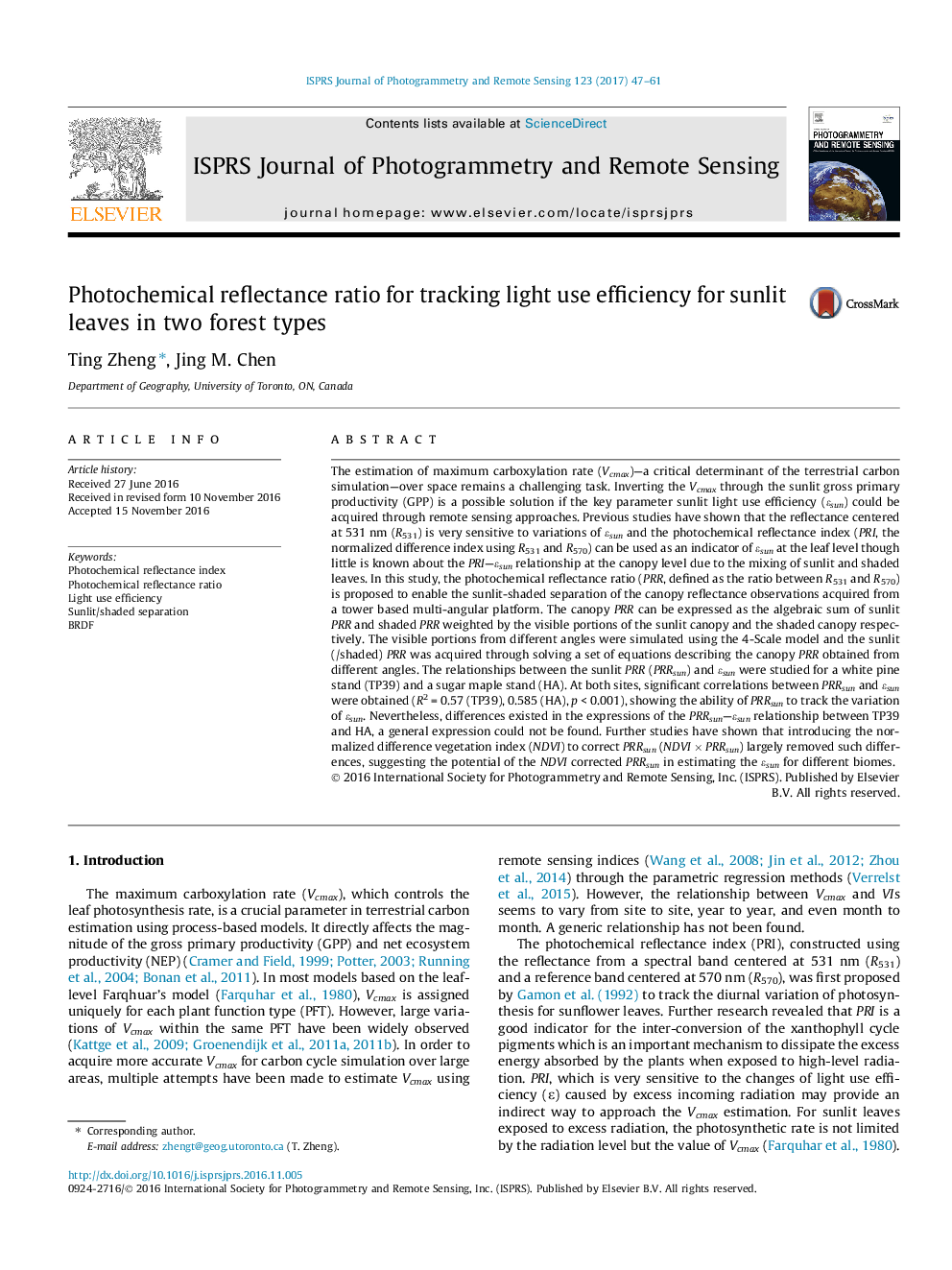| Article ID | Journal | Published Year | Pages | File Type |
|---|---|---|---|---|
| 4972998 | ISPRS Journal of Photogrammetry and Remote Sensing | 2017 | 15 Pages |
Abstract
The estimation of maximum carboxylation rate (Vcmax)-a critical determinant of the terrestrial carbon simulation-over space remains a challenging task. Inverting the Vcmax through the sunlit gross primary productivity (GPP) is a possible solution if the key parameter sunlit light use efficiency (Ésun) could be acquired through remote sensing approaches. Previous studies have shown that the reflectance centered at 531 nm (R531) is very sensitive to variations of Ésun and the photochemical reflectance index (PRI, the normalized difference index using R531 and R570) can be used as an indicator of Ésun at the leaf level though little is known about the PRI-Ésun relationship at the canopy level due to the mixing of sunlit and shaded leaves. In this study, the photochemical reflectance ratio (PRR, defined as the ratio between R531 and R570) is proposed to enable the sunlit-shaded separation of the canopy reflectance observations acquired from a tower based multi-angular platform. The canopy PRR can be expressed as the algebraic sum of sunlit PRR and shaded PRR weighted by the visible portions of the sunlit canopy and the shaded canopy respectively. The visible portions from different angles were simulated using the 4-Scale model and the sunlit (/shaded) PRR was acquired through solving a set of equations describing the canopy PRR obtained from different angles. The relationships between the sunlit PRR (PRRsun) and Ésun were studied for a white pine stand (TP39) and a sugar maple stand (HA). At both sites, significant correlations between PRRsun and Ésun were obtained (R2 = 0.57 (TP39), 0.585 (HA), p < 0.001), showing the ability of PRRsun to track the variation of Ésun. Nevertheless, differences existed in the expressions of the PRRsun-Ésun relationship between TP39 and HA, a general expression could not be found. Further studies have shown that introducing the normalized difference vegetation index (NDVI) to correct PRRsun (NDVI Ã PRRsun) largely removed such differences, suggesting the potential of the NDVI corrected PRRsun in estimating the Ésun for different biomes.
Related Topics
Physical Sciences and Engineering
Computer Science
Information Systems
Authors
Ting Zheng, Jing M. Chen,
